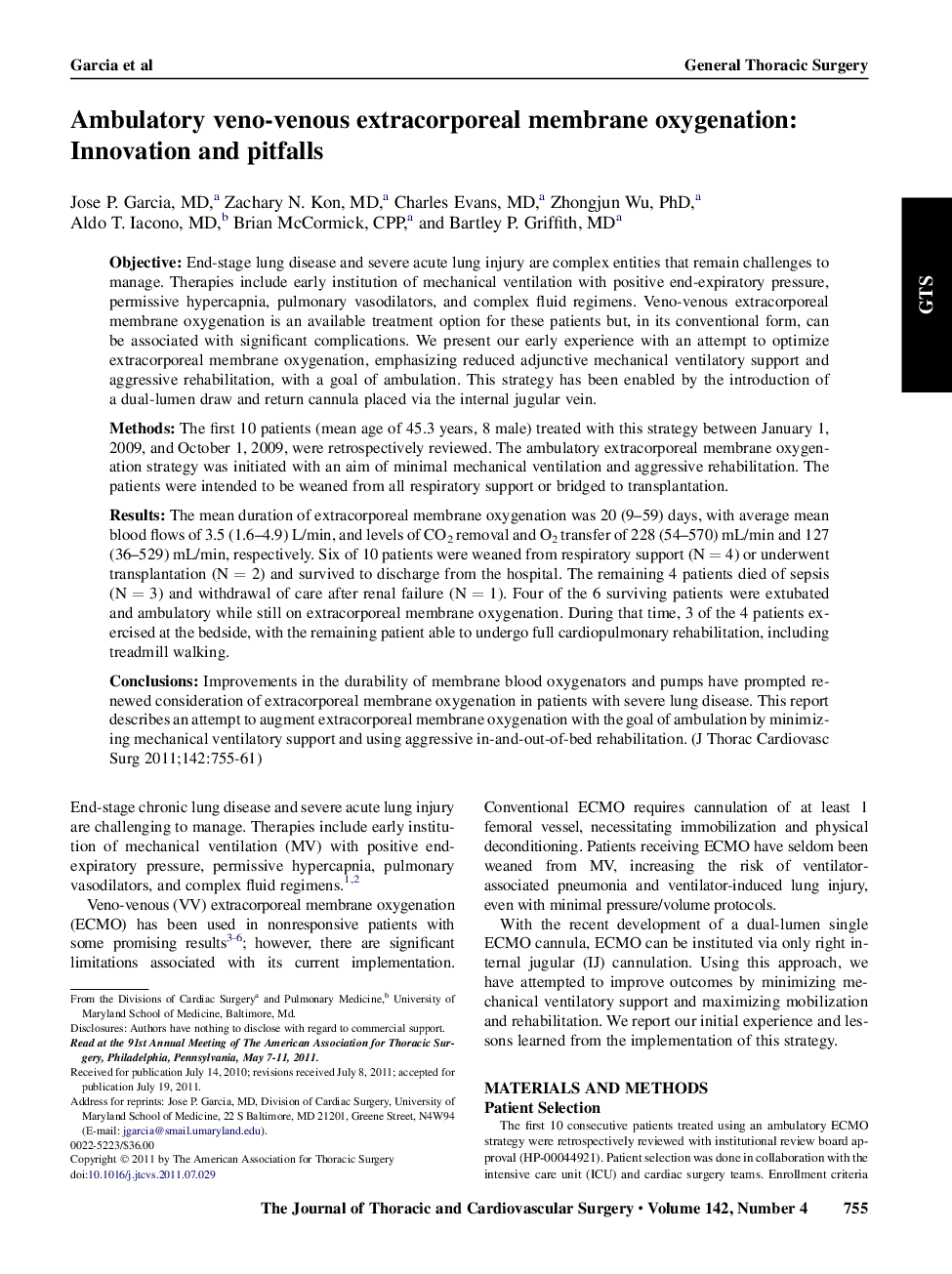| کد مقاله | کد نشریه | سال انتشار | مقاله انگلیسی | نسخه تمام متن |
|---|---|---|---|---|
| 2981854 | 1578644 | 2011 | 7 صفحه PDF | دانلود رایگان |

ObjectiveEnd-stage lung disease and severe acute lung injury are complex entities that remain challenges to manage. Therapies include early institution of mechanical ventilation with positive end-expiratory pressure, permissive hypercapnia, pulmonary vasodilators, and complex fluid regimens. Veno-venous extracorporeal membrane oxygenation is an available treatment option for these patients but, in its conventional form, can be associated with significant complications. We present our early experience with an attempt to optimize extracorporeal membrane oxygenation, emphasizing reduced adjunctive mechanical ventilatory support and aggressive rehabilitation, with a goal of ambulation. This strategy has been enabled by the introduction of a dual-lumen draw and return cannula placed via the internal jugular vein.MethodsThe first 10 patients (mean age of 45.3 years, 8 male) treated with this strategy between January 1, 2009, and October 1, 2009, were retrospectively reviewed. The ambulatory extracorporeal membrane oxygenation strategy was initiated with an aim of minimal mechanical ventilation and aggressive rehabilitation. The patients were intended to be weaned from all respiratory support or bridged to transplantation.ResultsThe mean duration of extracorporeal membrane oxygenation was 20 (9–59) days, with average mean blood flows of 3.5 (1.6–4.9) L/min, and levels of CO2 removal and O2 transfer of 228 (54–570) mL/min and 127 (36–529) mL/min, respectively. Six of 10 patients were weaned from respiratory support (N = 4) or underwent transplantation (N = 2) and survived to discharge from the hospital. The remaining 4 patients died of sepsis (N = 3) and withdrawal of care after renal failure (N = 1). Four of the 6 surviving patients were extubated and ambulatory while still on extracorporeal membrane oxygenation. During that time, 3 of the 4 patients exercised at the bedside, with the remaining patient able to undergo full cardiopulmonary rehabilitation, including treadmill walking.ConclusionsImprovements in the durability of membrane blood oxygenators and pumps have prompted renewed consideration of extracorporeal membrane oxygenation in patients with severe lung disease. This report describes an attempt to augment extracorporeal membrane oxygenation with the goal of ambulation by minimizing mechanical ventilatory support and using aggressive in-and-out-of-bed rehabilitation.
Journal: The Journal of Thoracic and Cardiovascular Surgery - Volume 142, Issue 4, October 2011, Pages 755–761